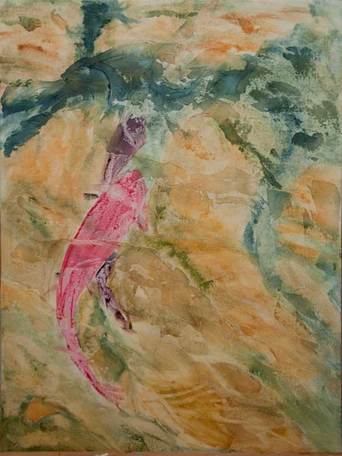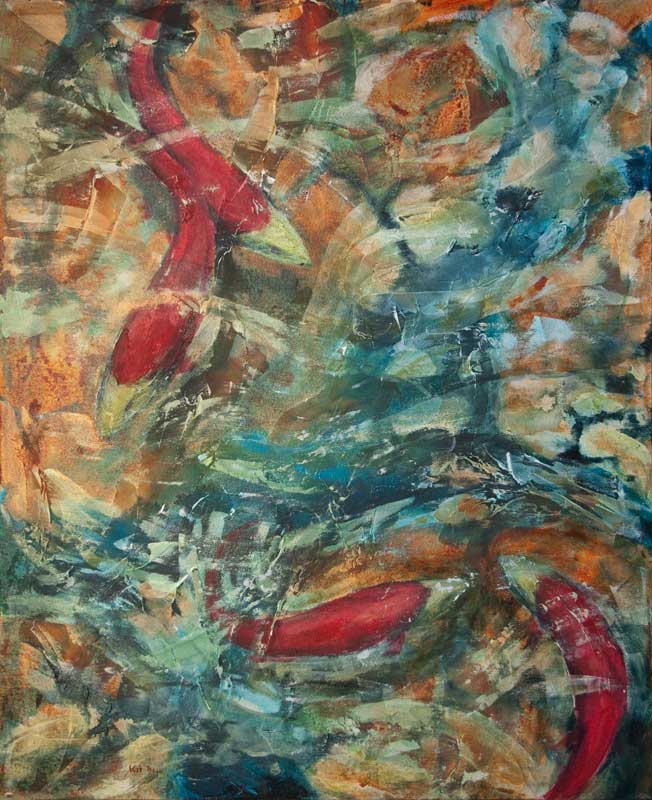|
Having been a Monty Python fan in years gone by, this phrase was the first to come to mind when I decided to write a blog about my most recent exploration. The work produced couldn’t be more “completely different” than the work that came before it and yet, somehow, it is still completely “me”. Last October, I attended a workshop with Suzanne Northcott. I wanted to explore different ways of applying paint. I learned so much from Suzanne during the workshop; I reread my notes at least once a month. After the workshop, I set out to explore transparent paint application and produced a couple of landscapes I was pleased with. One of them “The Clan” has been accepted along with 4 other paintings into the Calgary Stampede Western Showcase Art Show. Click here to see the blog on the creative process behind "The Clan". Thinking about what kind of subjects would be interesting to explore with transparent paint, water came to mind. I have some photo references of spawning Kokanee salmon so decided to give those a try. My first Salmon painting was a bit of a fight between chroma and value. I would glaze to increase chroma but that would darken the area. Using veils to lighten the area lost the chroma. I resolved the painting to a reasonable compromise. I discovered that molding paste is highly absorbent – when paint is applied over top, no matter how thinly, it absorbs enough that the area goes dark. I started another Salmon painting with more limited use of molding paste. I put thin washes of mostly fluid and high flow acrylics (Opus Fluid Paynes Gray and Opus Fluid Yellow Ochre). You can really see the difference of where the molding paste is. I built the painting up with washes of fluid acrylics. When an area got too dark or too busy, I used white applied with one of the Catalyst tools (like a spatula) to lighten it up or quiet it down. I was very pleased with the result. I decided to continue to pursue this subject matter and process to see where it leads. This time I started from scratch - no photo reference. I did a couple of sketches and pulled out a couple of large canvases. I played with some of my fluid acrylics to come up with a colour scheme (Golden Fluid Transparent Red Iron Oxide, Opus Fluid Phthalo Turquoise and Winsor Newton Alizarin Crimson and Naphthol Red for the salmon). Again, I started with molding paste and then applied the fluid acrylics thinly in shapes that suggested rocks below the surface of the water. I added large stokes of white applied with the Catalyst tool to suggest the movement of the water and reflections. The final results are semi-abstract: there are fish in there but the rocks and water are not painted as much as felt. I am very pleased with these two paintings and am imagining other subjects that could be suggested in a similar way. Stay tuned!
2 Comments
|
AuthorThe Okanagan provides inspiration wherever you look. I enjoy both painting on location and working in my studio. For more information contact me at [email protected] Archives
November 2023
Categories
All
|






 RSS Feed
RSS Feed